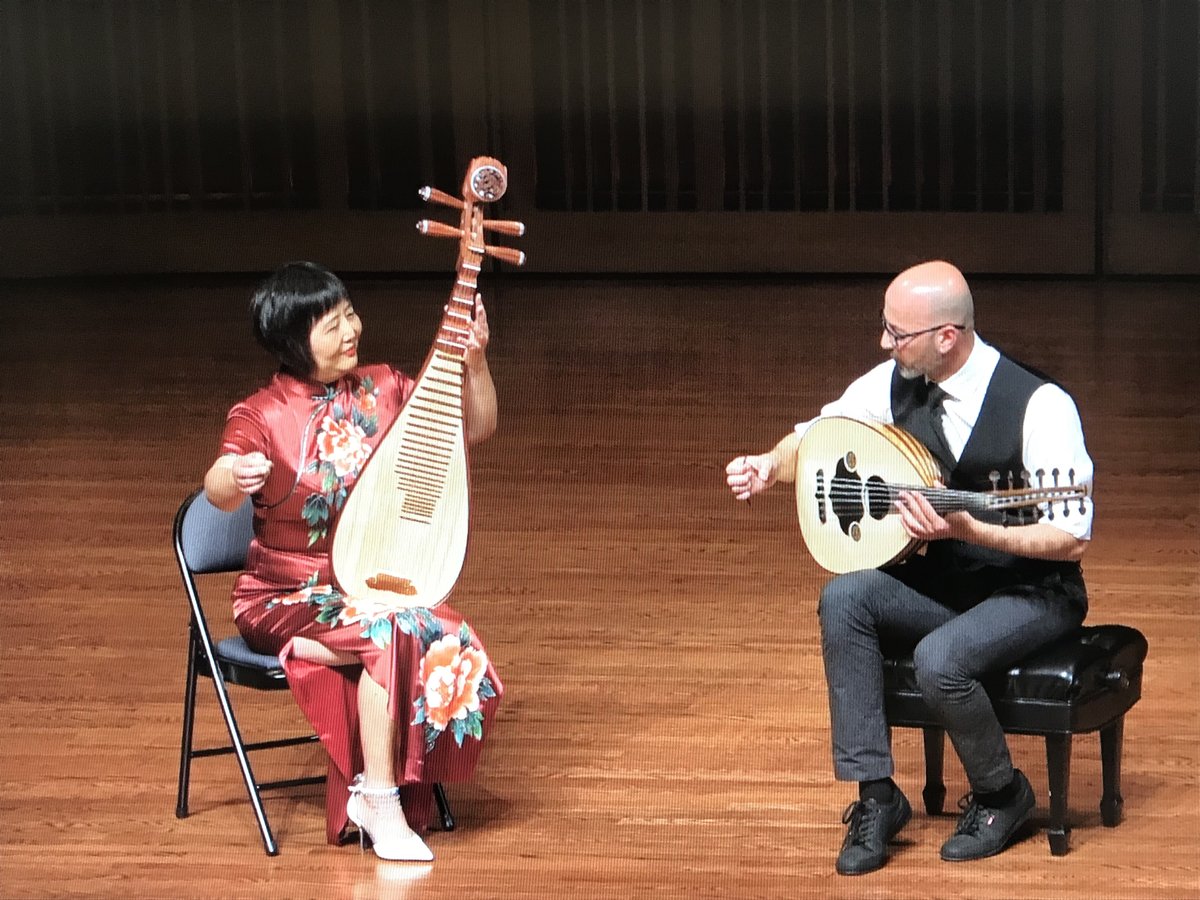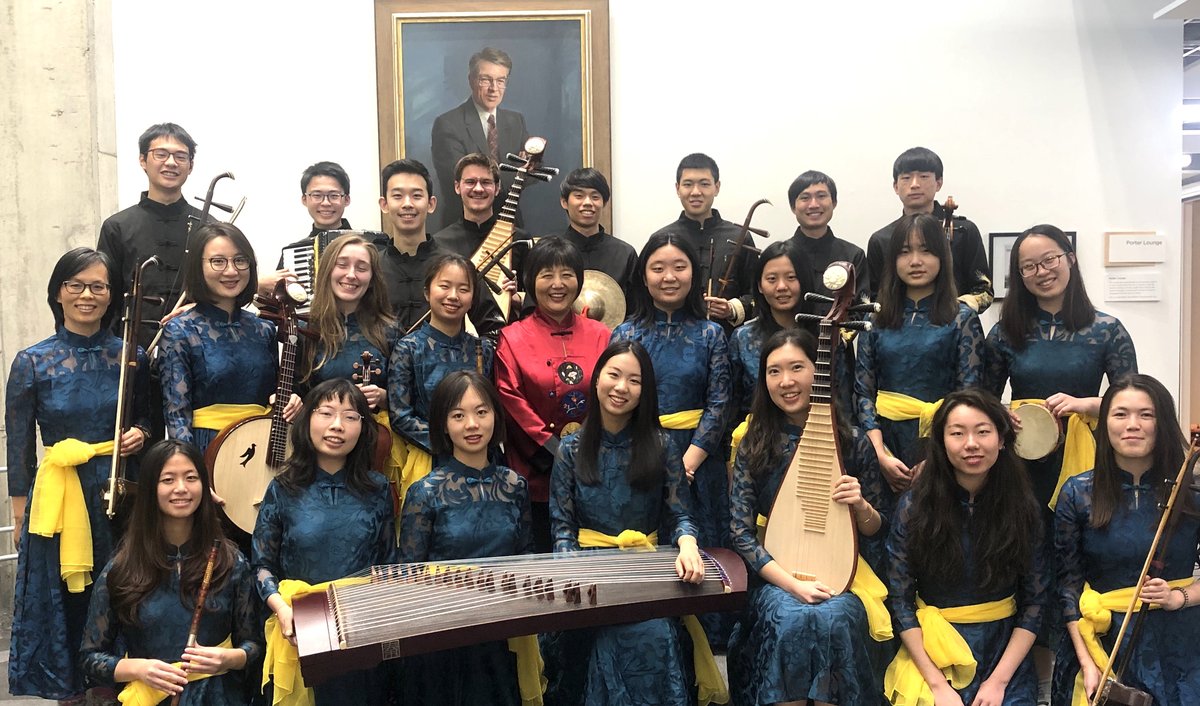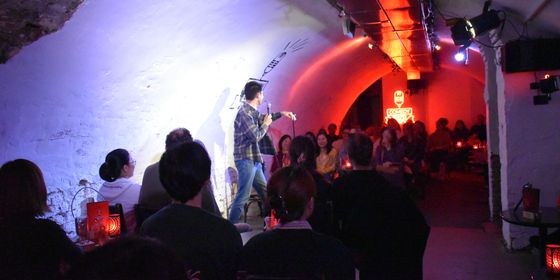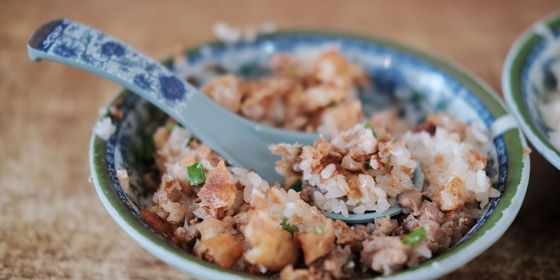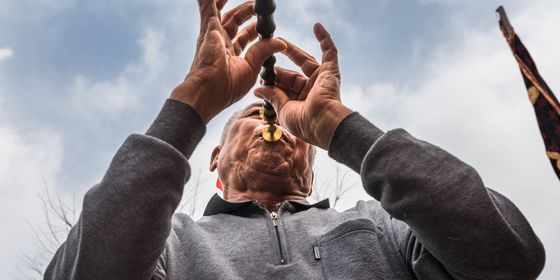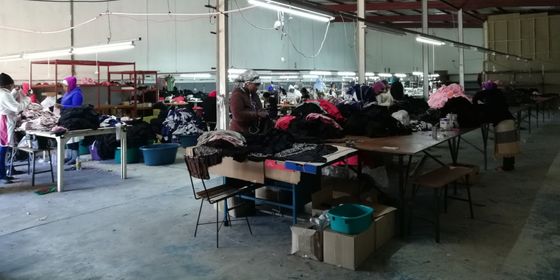How the spontaneous music of a Chinese-Syrian duo fuses the sounds of traditional instruments across cultures
On a rainy summer afternoon in 2017, Chinese pipa (琵琶) player Gao Hong said to Issam Rafea, a player of Syrian oud, in Northfield, Minnesota: “Hey, let’s have fun.”
For two seasoned musicians with international recognition under each of their belts—such as a Bush Artist Fellowship for Gao and a “Best Composer Award” in the Dubai International Film Festival for Rafea—the idea of fun meant picking up their instruments, hitting the studio, improvising, and seeing the results. After spending an afternoon spontaneously plucking away on their strings, they came out of the Salmagundi Recording Studio at around 8 p.m. that evening with the CD that would become Life As Is: The Blending of Ancient Souls from Syria and China, a 12-track debut album later nominated for Best Instrumental Album and Best World Beat Album at the 2019 Independent Music Awards.
Both immigrants to the US—Gao in the 1990s and Rafea in the 2010s—Gao, now the director of the Chinese Music Ensemble at Carleton College, has been playing the pipa, a four-string pear-shaped Chinese lute, almost 50 years, while Rafea, who was nearing the end of his artist residency at Carleton in 2017, is now a freelance musician and composer. In a video call with TWOC, Gao smiles proudly as she recalls the serendipitous birth of their first CD by video from her home in Minnesota, while Rafea nods along in the next window from Illinois where he is based.
Although the two musicians were acquainted before their first album, they were not familiar with each other’s instruments and playing styles at all. All subsequent collaborations between the two musicians have maintained the foundational style of Life As Is—no planning, all improvisation. “We don’t talk. We don’t discuss what key, scale, or tune to play,” says Gao, “but the connection we have when we play is like two people talking through music. We listen to each other and come up with what to say next.”
As a result, no two songs or performances are ever the same. Whether an invited performance at the Smithsonian Institution in 2019 after which audience said, as quoted on Gao’s website, the music allowed them to “transcend ourselves and be exceptionally present in those moments of creation,” or a second album, 2020’s From Our World To Yours, which earned two gold medals at the Global Music Awards, each chord is a new adventure.
Blending sounds from two cultures, in this case, does not mean thrashing together stereotypical patterns and rhythms. Instead, the strong cultural roots of each musician manifest themselves in the techniques and repertoires that draw on colorful motifs from their musical traditions. The melodic patterns on the Chinese pentatonic scale are woven with those from the microtones of the oud, and the tremolo (轮指), a pipa technique through which the player consecutively flicks the string with each finger of the right hand, are paired with the intricate glissando of the oud.
Meanwhile, the musicians focus on using them as part of their tools and vocabulary to express and experiment on the spot with things that are more universal and heartfelt, like the pitter-patter of “Summer Rains,” or the solemn breaths of “Homesickness,” both tracks on Life As Is. In “Outer Space” and “Robot,” tracks on From Our World To Yours, they even find themselves churning out mechanical and surreal sounds one might find in a sci-fi film soundtrack with their ancient instruments.
Rafea believes life experiences are essential to the creative process, especially to improvisation. “When you play, you’re naked. Whatever you play, it says who you are,” he tells TWOC.
This can be a risky process. Gao recalls that when she first came to the US on tour in 1994, when a radio host announced her performance at the Denver Art Museum, a listener called in to ask, “How can this Chinese woman play the peapod?”—having apparently confused her instrument with a similar-sounding vegetable. “That really hurt me. Since I was 8, my mom locked me indoors eight hours a day [to practice] and at age 12, I became a professional musician,” she reminisces.
By the time she went to the US at age 30, Gao was a graduate of China’s prestigious Central Conservatory of Music, studying under pipa master Lin Shicheng; had performed around China as a soloist; and had caught the attention of a Japanese booking agency. “I went to America thinking I would be [treated as a] professional. But they said, oh, she plays a vegetable,” she says.
As a result of this experience, she decided to stay and try to make a career in snowy Minnesota, determined to change perceptions. Even though the pipa was already considered archaic in China when Gao studied and performed in the late 1980s and early 1990s, when rock ‘n’ roll was all the rage, she found new challenges in the US. “The minute you go to another country, you are no longer [playing] on behalf of yourself…You literally become a Chinese musician.” It was not enough just to prove herself a capable musician or a minority that adds a dash of exotic color to the Western music world—instead, Gao decided to become an educator so that people could truly understand the music she played.
Like Gao, Rafea also had to start fresh when he moved to the US in 2013 with his family to take up an invitation from Northern Illinois University to teach their Middle Eastern Music Ensemble and give lectures. Then in his early 40s, he was already a very accomplished musician in Syria, having become chair of the Arabic Music Department at the High Institute of Music in Damascus and the principal conductor of the Syrian National Orchestra for Arabic Music. As the war escalated in Syria, Rafea decided to stay in the US to give his family a more stable life.
Challenge has also been a constant theme of their collaboration. It is not just because of the technical difficulties. Though the pipa and oud both have roots attributed to the Persian barbat, which is believed to have entered China via the Silk Roads, the instruments have different capabilities that need to be skillfully married, such as the quarter-tones that Rafea can play on the oud but are counter-intuitive to Gao’s fretted pipa.
Even when the sounds work in integrity, the duo still constantly experiment each time they play, borrowing techniques from each other’s playing to find new ways of making sounds on their own instruments. Sometimes, if they do four shows in a row, they might see familiar faces all four times, because these curious listeners wanted to check out how it was possible that each time there would be something new.
To Gao, the cross-pollination of musical traditions is about the give-and-take of what’s best in each culture, but without trying to become each other. “Our music is not Chinese music. It’s not Syrian music. It should be called ‘new world music,’” she says. This choice of words is a conscious effort to update the notion of “world music,” popularized during the 1980s as a marketing strategy to promote non-Western music in North American and European markets. “It’s a way of relegating this ‘thing’ into the realm of something exotic and therefore cute, weird but safe, because exotica is beautiful but irrelevant,” David Byrne, a founding member of the US band Talking Heads, wrote in a New York Times op-ed in 1999. “This grouping is a convenient way of not seeing a band or artist as a creative individual.”
New world music, as Gao sees it, should be the result of the spontaneous coming-together of musicians across cultures, something that can help break down barriers and reflect the world as it is—in flux, in contact—and hopefully, as it could be, in collaboration and in conversation. Since she began teaching in the US, Gao has found herself conversing with genres of music as she collaborated with musicians of various backgrounds—jazz, blues, Indian sitar, and Ghanian drum among many more.
Rafea, meanwhile, tries to achieve the same by laying himself bare through his music, even if it’s sometimes at the cost of commercial success. He thinks that to pick and choose what one plays solely based on what the audience or market expects is not a genuine approach to music. “I believe that since [my perspective and music] is from here 100 percent,” he puts his hand on his left chest, “it’s going to reach people” and transcend cultural boundaries.
Sometimes Gao and Rafea surprise themselves. Gao recalls moments when, during a performance, they would suddenly at the same time change to the same key, or move from one passage to a different passage without prior discussion. The two would watch recordings of the performances together and exclaim over these coincidences, but after a few minutes, Rafea would usually take a step back and say, “Not yet. We have way more things to surprise ourselves with.”







